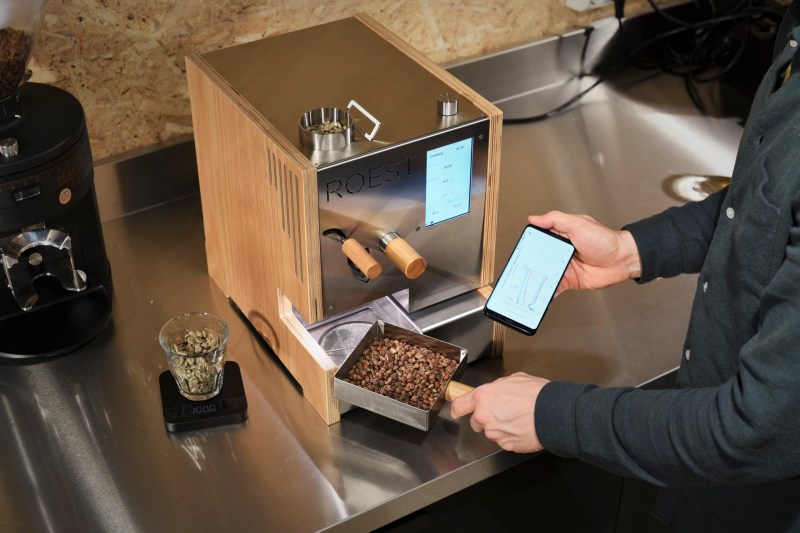
You’ve (nearly) mastered home brewing and nobody wants to drink your “craft” beer anymore, so switch to roasting your own coffee. Like making beer, it’s an art form. And all you need to be a regular Tim Starbucks is this techy sample roaster, Roest.
As a functional toy for specialty coffee lovers, Roest reduces the workload of sample roasting, saving you time and increasing the quality of home-batches. I had a roommate who would roast his own coffee beans in a cast iron pan every Sunday and it reeked, filling the apartment with smoke. The coffee also tasted terrible. Don’t be like him. Use Roest (and be the best roommate ever).
The interface is super user-friendly and includes both a manual mode to experiment with different roasts and preset modes so you can save roasts you love.

Coffee — for you drive-through addicts — begins as green beans that don’t smell. During the roasting, flavors come out (much the same as with that malted barley you were buying in bulk for the aforementioned homebrew beer). Variables in the roasting process affect innate aroma compounds in the beans, and that’s why the unique flavor of a cuppa joe is dependent on its roast.
The Roest machine is not only gorgeous but was made for Jedi-level coffee makers. Still, it’s intuitive enough for you and me. Users can adjust three main roasting variables to create their own coffee tastes, including:
- Environmental Temperature Profile
- Bean Temperature Profile
- Power Profiles
There’s also a fan profile you can play with. Roest automatically tracks these changes to save your roast profiles. At the end of the day, if all your roasting experiments taste nasty, a manual override can take full control, removing the guesswork.
Either way, literally watching your precious beans roast through a self-cleaning glass window will get you feeling all kinds of paternal pride.
Five roasting profiles can be downloaded onto the Roest machine itself, but via Wi-Fi, you can store an unlimited number of profiles in a Roest web portal. Yep, the roaster connects to Wi-Fi.

A roast of about 100 grams takes a minimum of three minutes to finish (what experts call the “first crack.”) Then you’re ready to collect your coffee beans, grind them, and make these fancy coffee drinks. Or drink it black because hot damn it will taste rich. Since these are sample batches, use a French press. (Here’s how if you’re totally lost.)
The Roest’s roasting chamber is patented with a fixed drum and dual fans for back-to-back roasting. The machine is about the size of a home coffee maker and fits on your counter. But the best part? Roest has a built-in ventilation system with a single exhaust system, for a smoke-free experience.
While Roest is not available yet, you can sign up and reserve your own. Right now, a Roest machine is going to run you 5,500 euros, or around $6,100. You can reserve your Roest here.


